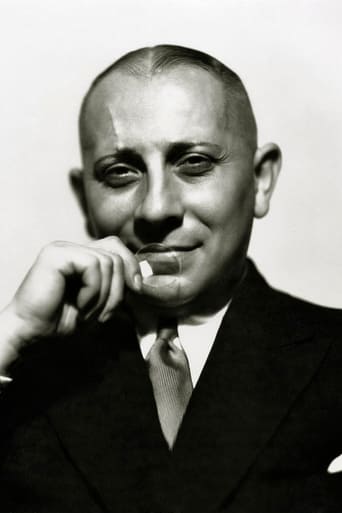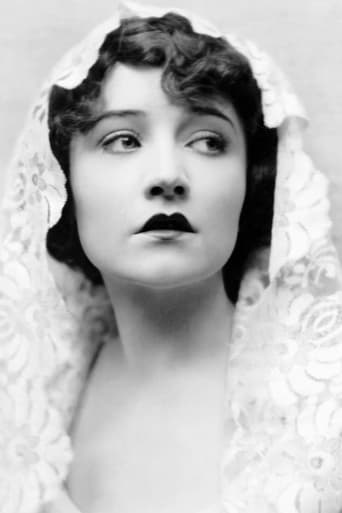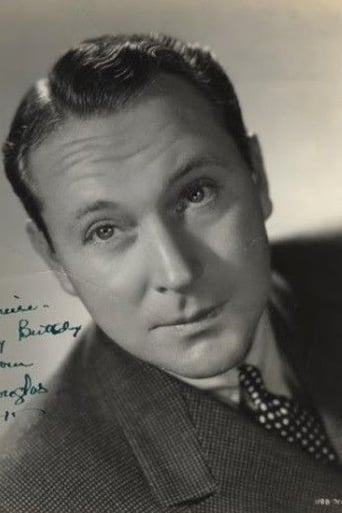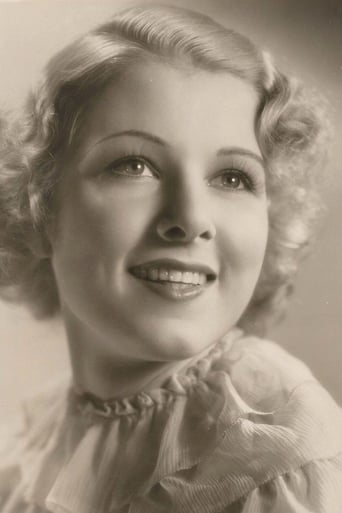Konterr
Brilliant and touching
Humbersi
The first must-see film of the year.
Hayden Kane
There is, somehow, an interesting story here, as well as some good acting. There are also some good scenes
Caryl
It is a whirlwind of delight --- attractive actors, stunning couture, spectacular sets and outrageous parties. It's a feast for the eyes. But what really makes this dramedy work is the acting.
Stephen Abell
This is a strange little number because it's a pretty dark subject matter, which at times is pretty chilling to watch, but then they throw in lots of songs. I'm not too sure what the Directors were going for when they filmed this. I say this because it's evident, at times, that quite a few scenes were added later... and I cannot figure out why.I really like the idea of the mad ventriloquist. In this stories concept, he is in love with his assistant, Mary (Compson), though finds it hard to fully converse with her. As The Great Gabbo (Erich von Stroheim), as he sees himself, he's nasty, offensive, and disagreeable. However, when he speaks through the dummy he can be loving and charming. It's this fissure that eventually leads to his mental breakdown.I know that the musical moments are there because it's set in the vaudeville and theatre life, though for most of the time these feel more like padding - filling out time. I think this could be remade and be an actually powerful movie. Reduce the musical side and expand on the breakdown. There are times in this movie where chills ran down my spine. The part where Mary walks out on The Great Gabbo and the Dummy calls her softly back, to be reprimanded by Gabbo is both heartbreaking and creepy as hell.The film, in general, is entertaining, though I have to say I found the number of musical intermissions too much. These are also 1920's musicals so are not so relevant today. Also, the dancing isn't up to par with bigger productions. Though I have to say the scene where Mary throws herself off a giant spiders web to be caught inches from the ground is breathtaking. I would say, for all creepy doll fans and those who like a psychological edge to their dramas, it's worth a watch.
kidboots
Now Erich Von Stroheim is regarded as one of the all time great directors but back in 1930 he was almost unemployable. He had been sacked from "Queen Kelly" (1928), at the star's (Gloria Swanson) insistence. He was then hired to star in "The Great Gabbo" and the film showed audiences what a wonderful character actor he was. People could see and hear him yelling, preening and huffing - sounding exactly the way he looked!!!Erich Von Stroheim plays Gabbo, a conceited meglomaniac, who has a ventriloquist act that he performs on the vaudeville circuit. During one performance, his assistant and live-in love Mary (Betty Compson) drops a tray and is forced by Gabbo to find another job. She leaves him with the advice "We only take out of this life what we put into it!!".Otto, the "dummy" seems to have a life of it's own - he is Gabbo's conscience and talks to him about his bad decisions. Before Mary goes, she questions why, with such a good act, he is still playing vaudeville. Gabbo decides to do something about it and 2 years later he is the toast of Broadway in "The Manhattan Revue". When they go out to tea at an exclusive restaurant Otto sings "The Lollipop Song" - "and it gets all over icky" - much to everyone's delight. They see Mary at a table with Frank, her new partner. They are playing at the same theatre.Marjorie "Babe" Kane then sings "Every Now and Then" with Frank and afterwards it gets the full production treatment with dancing girls and men in top hats. Gabbo hasn't changed his autocratic manner - his new dresser is ready to walk out but Mary intervenes. Mary feels sorry for Gabbo and tries to do a few things for him - gets his coffee etc. Frank gets the wrong idea as does Gabbo, who thinks Mary is coming back to him. Otto then sings "I'm Laughing" during the show. This song and "The Lollipop Song" have a very European sound. "The Ga-Ga Bird" is missing - at this point you see chorus girls removing bird costumes. Also at the end there is a montage of all the songs in the show and there is a scene of girls dancing in bird costumes - you also hear a bit of the music as well. Next there is a big production number "I'm In Love With You". I think the last couple of reels were filmed in "Multicolor" - just the look of the stage and dancers. The next number is "The New Step" featuring "Babe" Kane and dancing chorus girls in a whizz bang production with psychedelic curtains and a revolving bulls- eye. The songs just keep on coming."When You're Caught in a Web of Love" is astounding. An amazing acrobatic dance (it is so obvious that it is not Betty Compson dancing). There is also a conversation being carried on, stopping only when she is being thrown around, and then resumed when she is still. The dance starts off on a big spider's web and the dancers then jump down. It would have been glorious in color. All the chorus girls dressed as butterflies and dancing, not always in time but that is part of the charm.When Mary tells Gabbo the truth - that she and Frank are married and if she misses anyone it would be Otto, who always had a kind word for her - Gabbo is completely derailed mentally. He has a complete break down and ruins the finale and the ending shows him walking forlornly away with Otto as his name is being taken off the theatre marquee.I think the problem with the musical numbers during the last part was that they didn't seem to be incorporated into the plot. Even if there had been some clichéd dialogue "This is our big chance", "I hope we make it" - it would have made the last 20 minutes less awkward.Recommended.
MartinHafer
This was a very good film that could have been great had it not been a musical. But, in 1929 when the movie came out, Hollywood seemed to be producing tons of musicals (so they could show off the new medium of talking pictures) and a lot of stage numbers were used to stretch out the film. Unfortunately, they had a tendency to distract from the main plot and after a while got really tedious. I think showing bits and pieces of the musical numbers or eliminating them altogether would have been a good idea in retrospect.Erich von Stroheim played "Gabbo", the world's greatest but seriously flawed ventriloquist. He could make his dummy "Otto" say nice things but he himself was a cruel, pompous jerk when the film began. The film starts with Gabbo unmercifully berating his companion, Mary, and blaming her for every little flaw in his act. It seems that he was just a mean-spirited perfectionist who felt a need to scapegoat someone. Well, after thoroughly mistreating her, she left him. Despite this, his act improved considerably and Gabbo was the star of Broadway within two years. But, he was also incredibly lonely and longed to have Mary back. And, as luck would have it, he ended up performing in the same show as Mary and had high hopes of getting back with her and telling her he loved her and was sorry for his past behavior. This aspect of the film and how it all worked out was the most satisfying and movie part of the film.However, while the film ultimately concerned Gabbo and his ultimate loneliness over losing Mary, there is a strange aspect of the film that is never fully developed and I really wished it had been. You see, in the first 2/3 of the film, Otto seems way too real and creepy. He is able to move and talk rather independently of Gabbo--as if he is either REAL or that he is in fact Gabbo's alter-ego and he cannot separate himself from his dummy. Either way, it's strange that von Stroheim can eat and drink--all the while Otto talks and talks and even lectures Gabbo! It is highly reminiscent of the later film, MAGIC, as well as an episode of THE TWILIGHT ZONE, where the dummy turns out to be real. But, this entirely brilliant aspect of the film just vanishes as if they forgot to continue this subplot! Still, overall it's a highly originally plot for its time and a great curio. Plus, for 1929, the sound and picture quality on the new Library of Congress restoration released by Kino Video.PS--As a homage to this film, THE SIMPSONS had an episode where a ventriloquist and his dummy, Gabbo, became a huge hit with the kids and briefly put Krusty out of work.
spaman34
The Great Gabbo "The Great Gabbo" is one of the finest examples of American Communist Propaganda films of the early 1900's existent today. It is a master piece of film literature, when you consider the limitations of the technology of the day. Vitaphone, the technology used to cut a vinyl record of the speech or music as the action was filmed, was new and very expensive, and made film editing a nightmarish chore if not impossible.The script employ's Epic Theater techniques taught by Bertolt Brecht. In this respect it is a thinker's film, the film forces you to think. From the very beginning to the end you are constantly quizzical about behavior, motivation and environment. This is a musical comedy, right? How and why is the title card segment at the beginning of film different from other "musicals". Meet the self-absorbed individualist Gabbo who never acknowledges others who help him gain fame, his ventriloquist dummy Otto, and his stage partner Mary.We soon realize that Gabbo has very superstitious religious beliefs. While he does not perform a sign of the cross, we know that he operates under the fear of his destined fate from unseen mystical powers. For instance when Mary inadvertently places his hat upon the bed, Gabbo calls Mary a foul name saying "Don't you know that it is bad luck?" Mary, in response, lists a series of activities which might displease and bring about the wrath of an angry immortal. She is more practical stating, "We make our own bad luck." The comparative is the communist environment of the musical theater. Everyone works and does their part for the betterment of the show. Here, once Mary leaves Gabbo, she too climbs to the top and find success in her profession as a singer and dancer with her partner/husband Frank. Gabbo and Mary are both successes in their professions, who then is happier? Who is more honest in their success? Capitalism is treated as an impertinent side note to the values being discussed. Capitalism is the financier management of the show and it seeks gain through investing in both ideals.The film contrasts individualism versus communism. Many reviews have missed the underpinning effort of the writers and directors to use epic theater, and there blatant agenda to use it to teach the values of communism. They often deride the films production numbers as being unpolished and lacking flair. I ask, how could a film made with the intent to teach communistic ideals express them more eloquently? The ideal of community is not a flawless world, but a world where everyone does what they can to contribute to the whole. Some dancers lag behind the others yet they are there doing there part. Some simply walk from one place to another. The stage is full, busy and the message is understood. The imperfect dance numbers, in the epic theater style, emphasize the communistic ideal not detract from it. Few people would dare be as direct today.The sad thing about communism's failure is that without community all we have left is individualists who, like Gabbo, are only self-absorbed and care nothing for their neighbor, nor acknowledge supportive people.This film is a treasure that should be studied over and over. There are so many messages you simply can not absorb them in one viewing.Watch for Otto's "I'm laughing" song sequence, it is a precursor to Bobby McFerrin's "Don't worry, Be Happy." An interesting comparison is with this film's theater community and with the community environment of Los Angeles in the modern movie "Crash." How are they the same? How are they different? How are messages of these two films different? How are they the same? Think about it.If you don't own a copy of these films you should. I give "The Great Gabbo" two thumbs up and a black and blue stubbed toe. I guess I'm a little like Mary—accident prone. Oh and have a nice day. Be Happy!



